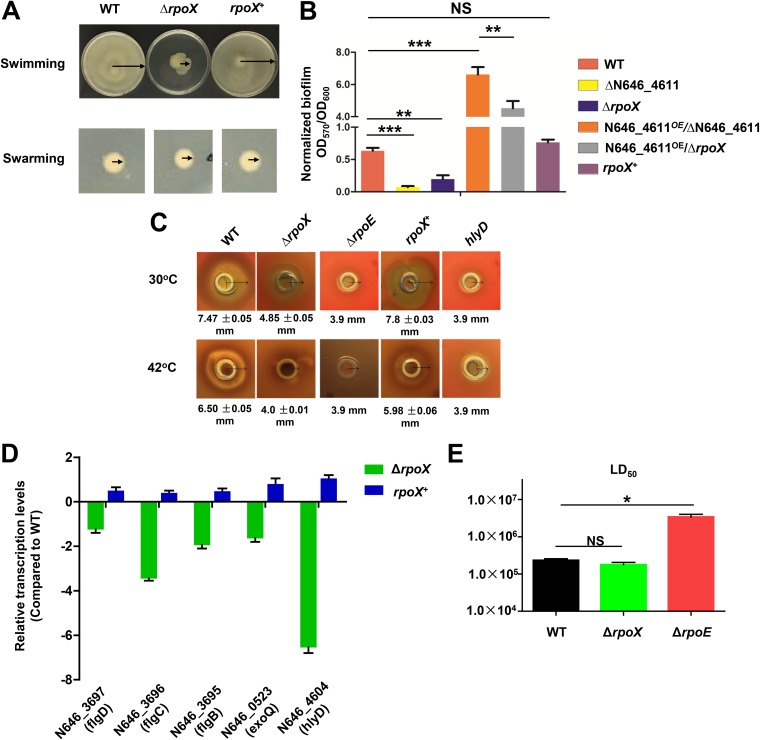FIG 6.
RpoX positively regulates motility, biofilm formation, and hemolytic activities. (A) Motility assays of WT, ΔrpoX, and rpoX+ strains. Diluted cultures were spotted onto swimming and swarming plates (containing 0.3% and 1.5% agar, respectively) and incubated for 48 h or 12 h at 42°C. Three independent cultures were used for each strain, and a representative result is displayed. (B) Assays of biofilm formation by different strains. For WT, ΔN646_4611, ΔrpoX, and rpoX+ strains, biofilm formation in glass tubes containing LBS medium after 48 h of culturing was assayed. N646_4611OE/ΔN646_4611 and N646_4611OE/ΔrpoX strains were cultured in LBS medium with 0.04% l-arabinose for 48 h. The results are presented as the means ± SD (n = 3). **, P < 0.01; ***, P < 0.001; NS, not significant (by t test). (C) Hemolytic activities of WT, ΔrpoX, ΔrpoE, rpoX+, and ΔluxR strains grown on sheep blood agar plates at 30°C (top) and at 42°C (bottom). (D) qRT-PCR analysis of the transcripts of the selected genes. Total RNA was isolated from the ΔrpoX and rpoX+ strains after 12 h of growth in liquid culture. The results are presented as the means ± SD (n = 3). (E) Median lethal dose (LD50) of WT, ΔrpoX, and ΔrpoE strains in zebrafish. Series of dilutions of WT, ΔrpoX, and ΔrpoE strains were intramuscularly inoculated into fish that were acclimated at 30°C for 4 weeks. A total of 30 fish were used for each of the dilutions. The infected fish were cultivated at 30°C and monitored for 7 days. The results are presented as the means ± SD (n = 3). *, P < 0.05 (by t test).

